Anyone who has studied how to be successful in marketing understands it takes out-of-the box thinking, and in the case of today’s incredibly successful guest, Alex Mandossian, it takes a lot of chutzpah.
Since 1993, Alex has generated nearly $417 million in sales and profits for his marketing students, clients and joint venture partners on six continents. He has shared the stage with Richard Branson, Larry King, Tony Robbins, Marianne Williamson, Robert Kiyosaki, Suze Ormand, Mikhail Gorbachev, and the Dalai Lama. He has published several books, including the recent Alexisms: Useful Life Lessons from a Recovering Serial Entrepreneur.
In today’s episode we talk about writing books, promoting books, doing virtual book tours, and the Socratic method as it applies to copywriting. We talk about the difference between giving people what they want, versus giving them what you think they need. And back to the chutzpah, Alex has done stuff like invite presidents to give an interview, and it worked both times he tried it. He tells all about how that came to be in this episode which I think you’re going to find pretty fascinating, so be sure to stay tuned!
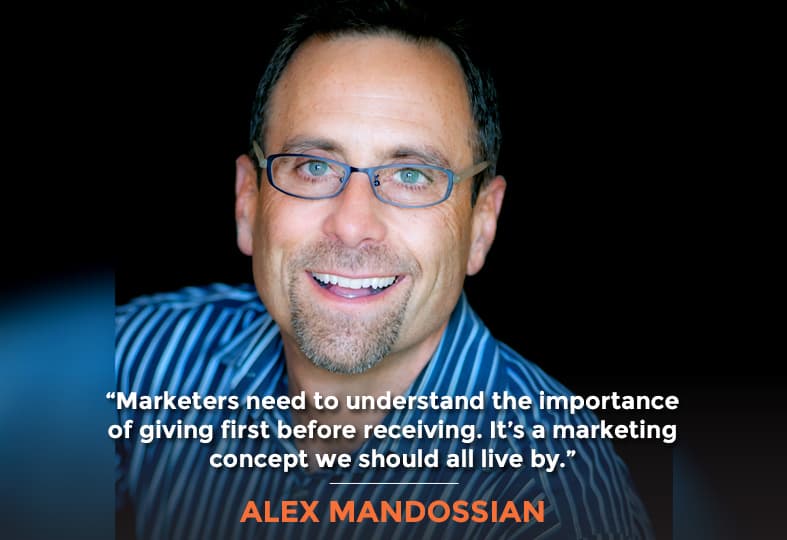
In this Episode
- [00:29] – Stephan introduces Alex Mandossian, who has generated nearly $417 million in sales and profits for his marketing students, clients, and joint venture partners on six continents.
- [05:54] – What is Alex’s Ask Campaign, and how does it work?
- [12:41] – What is FIT formula?
- [17:37] – Alex shares his own experience using the FIT formula and how it gave him massive opportunities to meet big names in his industry.
- [24:50] – Alex recalls his first teleseminar experience with Armand Morin back in 2002.
- [29:48] – Alex shares Jack Canfield’s inspiring story of success.
- [37:14] – Alex explains how business is an excellent metaphor for life and how vulnerability can also be an advantage.
- [42:34] – Stephan demonstrates the concept of Infinite Banking.
- [50:52] – Alex elaborates how turning an objection into a question can help you in building your business.
- [1:03:33] – Visit marketingonline.com to learn more about Alex Mandossian’s multiple ways of success in business.
Transcript
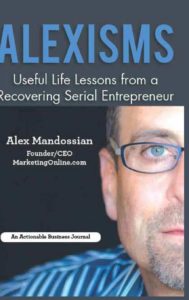
Thank you for joining us today, Alex.
Stephan, I love your name because it’s an alliteration—Stephan Spencer. I wish I had the same thing like Alex Avalon or something, but I couldn’t pull that off. I wish my mother heard that introduction. She still doesn’t know what I do despite being in the business for over 20 years.
It’s awesome. You could come up with a pseudonym.
I could.
Who’s the famous internet marketer who had a dating-
David DeAngelo, he’s a good friend of mine. Eben Pagan.
Eben Pagan, that’s right. David DeAngelo because he wanted that alliteration.
Exactly. I’ll work on that one next time.
Let’s start by talking about how you’ve gone through so many transitions and transformations; as the internet evolved, you evolved with it. I remember way back in the day, in the very early days of internet marketing, you really put your name out there as the guy who had the one question. You had this technology that allowed people to ask one question, a survey question of what’s the one biggest question you have about X? That was one of the ways that I’ve heard about you. This was easily over a decade ago, maybe 15 years ago. You’ve gone through so much reinvention. Can you walk us through some of this and how it might apply to our listeners?
Sure, I’ll give a 300-second origin story so that if those who are listening don’t know who I am, most likely they’re not, they don’t know who I am because when you get old enough they come onto the scene and they’re smarter, they’re faster, and many times they’re more successful. I tell my students all over the world, “I want you to be more successful. I want you to be wealthier, and nothing is more annoying when it actually happens.” Most of my students are now my teachers and I can name drop, but we’ll get into that if you’re curious.
I tell my students all over the world, “I want you to be more successful. I want you to be wealthier, and nothing is more annoying when it actually happens.” Most of my students are now my teachers.
I started back in 1993. I didn’t go online, I started to consult because I come from the electronic marketing world of infomercials and spot television, which is a one-or two-minute spot where you sell something that doesn’t have the highest redeemable value, but a lot of money could be made back then because cable television was a big deal. Eventually, by 1995, I started to do consulting. The Infusionsoft and Ontraport of those days, it was called 1ShoppingCart. I had a good friend, Rob Bell, who had purchased it from a gentleman named George Lou. I was assisting him to navigate through the whole process of getting as many people as possible and eventually selling it. I believe he sold it for just under $15 million and he did quite well. Then the company that took it over hasn’t really done much with it since, in my opinion. Nevertheless, it was the first CRM, if that’s what you could call it, with a shopping cart back in its day.
Marketers need to understand the importance of giving first before receiving. It’s a marketing concept we should all live by. Share on XI did a lot of consulting in the first five years where I didn’t have the guts to go online because this is the America Online days, it’s dial-up. We get busy signals when we’re trying to get online, it’s before the turn of the 21st century. But then something happened in 2001. In fact, on September 12th of 2001, a day before, two buildings came crashing down in Manhattan because of a terrorist attack. That was a tragedy, but in the Far East tradition of destruction, there’s always creation that follows. No one was traveling anymore. In fact, they didn’t for at least about a year.
All of the thought leaders, whether it’s Jack Canfield, Mark Victor Hansen, Denis Waitley, anyone in the Nightingale Conant catalog you can think of. They all contacted me because Google was a thumb-sucking baby back then, they had their IPO in 2004. There was no Facebook, there was no Twitter, there was no LinkedIn, but there were teleseminars and there were these bridge lines where you could get 1,200 people on a call if you had the ability to get them on, and I did. I was acknowledged as the Larry King of teleseminars.
People would reach out to me and say, “Hey, can we do a teleseminar?” Because they needed a way to make a presentation, not physical anymore, it would be virtual. I would interview them. I borrowed something that Socrates created about 2400 years ago called the Socratic method, I called it the ask campaign, it’s what you were insinuating earlier. For example, let’s take Brian Tracy. We would email Brian Tracy’s list, I would be the interviewer, he was the interviewee or the thought leader. We would say, “If there’s one question you would ask Brian Tracy about selling,” we would pick a topic so it would be more specific, “but if there was one question you’d like to ask, what would it be?” and then thousands of questions would come in.
I developed a very basic and simple application called the Ask Database where it would just look at certain keywords, it was like the Google of the survey data that would come in. I would mimic and model the words that actually came in, utilize it for the sales copy—it was kind of like marketing jiu-jitsu. With his list, we would do a free teleseminar where we would deliver what I think to be content worthy of devotion, it would be about 70 minutes.
Many of the millennials will say, “What’s that?” but we used to have CDs, compact discs, and audio. We’d also have these clamshell transcripts that we would enhance and turn them into the written format. If someone wanted the replay, we would charge $27, if they wanted the transcripts, we would charge them an extra bump of $10. $37 at a time, most people took that, about 80% of the people would take it. I took no profit from it. The reason I did that is so those thought leaders would remember me and would keep having me come back where I could be on their stages later on, in 2003-2004. That’s how I really launched my speaking business.
Whether it’s Les Brown, or Jack Canfield, or Mark Victor Hansen, or Denis Waitley, and Brian Tracy, as I mentioned, we’d make thousands of dollars through teleseminars. Anytime there was an event, my partner back then—if this name is familiar, Armand Morin—he had one of the first seminars in internet marketing called the Big Seminar. I would assist him to help fill that. I did eight of those. I’d speak on stage and I did teleseminars before the events.
Whether it’s Les Brown, or Jack Canfield, or Mark Victor Hansen, or Denis Waitley, and Brian Tracy, as I mentioned, we’d make thousands of dollars through teleseminars.
People would just hire me to help fill events using teleseminars and that started a course called Teleseminar Secrets, it was a blessing, but generated nearly $15 million in five years, which was a lot of money back then. We didn’t have any launches per se because Jeff Walker hadn’t created the product launch formula. However, I did hire him and his brother John to do my final watch for Teleseminar Secrets. Doing $1 million in three days was not a big deal. In fact, two teleseminars with two partners, Armand Morin and Rick Raddatz, we did in 2007, $1.2 million in less than 29 minutes of selling. It was the first iteration of lead pages, click funnels, that sort of thing called marketing makeover generator.
We got audio online for the first time called Audio Generator. We got a video online before YouTube called Instant Video Generator. I was kind of in the software as a service, the SaaS business, and having monthly recurring revenue was like going to heaven without the inconvenience of dying. My mother thought I was doing something illegal; we’d make a lot of money in a very short time period.

Then eventually, I’m not in the dot-com world but in the internet marketing entrepreneurial world I got asked to speak in a lot of places. Because I did so many interviews, I got to interview two US presidents, I interviewed Steve Jobs, I interviewed a bunch of people who are very well-known. It ended up becoming very fruitful for me. Eventually, I started to be more and more on stage.
As it evolved and I went into semi-retirement in 2009, a friend of mine called T. Harv Eker, he had a very big event marketing company called Peak Potentials back in the day. He said, “Hey, can we have a five-day event where we can actually have a boot camp where people have no idea how to generate money online and within five days make money?” I said, “That’s impossible.” He said, “Do you want to do it?” I said, “Yes.” He said, “Why?” I said, “Because the difficult, we can do it immediately but the impossible takes a little longer. So let’s do it.”
There was no cloud back then, we had a data center we would ship all over the world. We did over 24 of them and nearly $25 million later, I learned that taking what we know here in the United States, and North America. I would consider Canada and the US because Canadians are very well-versed in internet marketing, I think sometimes even better than the US. I think Australia as well. I would go to the third world or emerging nations such as Brazil, South Africa, and other areas where we would teach things that worked a few years back and they would be ready for it at that time. That’s what I do today. I go overseas and I’d have five-day events called Guerilla Business Intensive. I teach them the guerilla business, which unfortunately comes from the concept of warfare. Unconventional low-cost strategies to make money online.
That’s what I do today, where I speak and then I sell a course, it goes into a members area, the technology has changed. What hasn’t changed is that the message has to be clear, concise, and compelling. Now, whether it’s Russell Brunson, Ryan Deiss, Perry Belcher, Vishen Lakhani, or many other people, these people were once students. They’re annoying because they’re smarter than I am, now they’re my teachers and mentors. That’s a brief history.

That’s quite a storied life you’ve been leading. I’m sure you’re going to come up with some crazy amazing things to come. Little nuances can make a world of difference, just one little distinction. As Tony Robbins says, “You get that one distinction, that two millimeters make the difference between either that horse that wins the race or the horse that comes in second place and gets only 10% of the prize winnings.”
That’s correct, like a great golfer. Between 1st place and 100th place is just a few strokes over the course of a year, but it makes the difference when the rubber meets the road.
One nuance that I learned, I can’t remember who I learned it from but it was such a powerful distinction for me, that is get your mentors and these heroes to interview you about your subject matter expertise and not just interview them. Like Brian Tracy interviewing you about how to fill a virtual event with thousands of people would be an amazing piece of social proof, as well as a great opportunity and positioning. It’s pretty powerful. Of course, having somebody that you admire asking you these kinds of questions is also a bit humbling too. It’s pretty amazing. It’s happened to me, I had Jay Abraham interview me about SEO. That became one of the episodes of this podcast, but first I interviewed him about all his wealth of knowledge, and experience, and so forth, around things like preeminence and all that.
I’m curious if you had your mentors or these huge named people that you mentioned, have they interviewed you about your subject matter expertise?
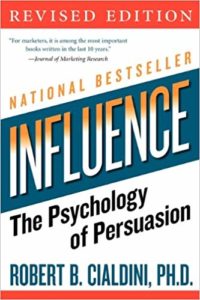
Yes, Stephan, they have. What must come first is I interview them, sometimes once, sometimes twice. If I interview them three times and they choose not to interview me, then I know that that dog doesn’t hunt. Male or female, doesn’t matter. It doesn’t always happen but usually 8 out of 10 times it does. There’s the power of reciprocation that Dr. Robert Cialdini has talked about over the years in his book, Influence. He has six principles and most recently a seventh principle called the Principle of Unity. I didn’t know it at the time but by giving first then there’s an opportunity to receive.
One nuance that many people overlook, especially in digital marketing, is if you’re a crappy receiver then you mess up the whole circulation process of giving and then receiving. If you’re not willing to receive, you’ll never get interviewed because you’ll deny it. They say, “Thank you,” instead of saying, “You’re welcome.” You say, “Well, it’s nothing. It’s nothing. Don’t worry about it.” and then there’s always a resentment that’s copped over. “Well, they’re not doing anything for me.” It’s because you didn’t receive it. I tell my students you have to be a good giver and you can always give first but make sure that you receive when the time begins.
We have something called the FIT formula, F-I-T. The F stands for follow. In the era of social media, your face pops up on Facebook, or Instagram, or even on LinkedIn and other social media platforms where you’re following them and edifying them whatever their social media platform of choice is. You’re actually adding to that social conversation. Then it takes somewhere between 60 to 90 days, they start noticing you because you’ve been following them.
I do this with about three people, three thought leaders who don’t even know me, and then eventually they notice me, then they invite me to have a conversation, that’s the I of FIT. They say, “Hey, what can I do for you?” I say, “Well, you can allow me to interview you and I’ll get it out to my tribe. I have a fairly large following on social media, as well as on my podcast. I’d interview you, and I find out things that no one else would have found out. I spent four or five hours of research,” which most people don’t do as well. It’s another nuance, research is boring, it’s not sexy to a lot of people. But when you find out about what are their childhood wounds, what are the inflection points in their life, that comes out in the interview. One-hour interview, a half-an-hour interview can mean more than maybe 10 years of seeing people at mastermind groups or at seminars.
After they invite you for that interview then the T of the FIT formula: follow, invite, the T is tell. Tell the world that you’re interviewing them so they don’t bow out, they don’t accidentally not show up because they’ll look bad. Just utilizing that formula, anyone listening, or watching, or just engaging in this interview can get to a certain level where you could not do without the power of social media and the way that you show up. It has to be through consistency and through the compelling content of making sure that you make them look better than they thought that they could ever look. Being a great interviewer, I believe, is one of the most not only lucrative but transferable skills on earth.
There’s a big difference between knowledge and wisdom. Knowledge is knowing a tomato is a fruit. Wisdom is knowing not to put tomatoes in a fruit salad. Share on XYeah, I agree. This FIT formula, do you have an example where you’ve done this very thing and gotten some amazing opportunity out of it, some huge name that you would never have dreamed possible became possible?

Yes, of course. I could name you maybe 30 people but one that comes to mind is Jack Canfield. I knew his writing partner, Mark Victor Hansen, but I didn’t want to lean on Mark to make the introduction because I thought that would be not cheating but I thought it would be a shortcut. I would follow Jack again and again through social media in the early days in 2010-2011. I had introduced him on stage, I’d been the master of ceremonies of many events. I remember getting Brendon Burchard on one of the major stages early on in his career when he just had his book called Life’s Golden Ticket. I was a champion for people just coming on the scene who I could recognize that had a lot of talent. With Jack, I would follow, follow, follow, follow then he invited me to meet with him.
We met in Newport Beach, it was a physical meeting. Jack, he’s not a big sales guy. He’s not anti-sales but he’s more analytical. He’s the guy who really named Chicken Soup for the Soul. He envisioned that in a dream, he called up Mark, and that ended up becoming the book, and the franchise, and then ultimately they sold it for millions of dollars.
Once we met, I invited him to do an ask Jack Canfield campaign, which I owned the URL for many years and I said, “Look, I can give it to you or I can interview you each month. Why don’t you just pay me $1200 for every interview and let’s see how long it lasts.” That lasted five years. Patty Aubry who ended up becoming his CEO ended up saying, “God, I can’t believe we’re paying you $1200 bucks for one interview every single month.” I said, “Well, we’re filling your events, you have your breakthrough to success events,” which at that time was a five-day event. Then I said, “Why don’t you invite me over to Jack’s house,” which happens to be in Santa Barbara “and I’ll tell the world about it. We’ll put his Train the Trainer program online.”
He was my first $25,000 client in 2011. I made a lot of money by selling $2500 courses. They didn’t call them this back then but there were tripwires and all kinds of ways to engage people, and stick strategies that my good friend Joe Polish and I had taught. We created a course called Stick Strategy Secrets. For a full day, I did a consultation, I got my $25,000. Three years later they launched it, because he’s a perfectionist, and ended up launching it. Now I think they’re close to $7 million in sales online so that people don’t physically have to go to their Train the Trainer program.
He’s really good at what he does, he’s a dear friend. I’ve interviewed him over 85 times. I’m kind of his resident pimp because he doesn’t like to sell, so we have his One Day to Greatness events where I’m the selling person. I stand next to him and I make the sale, they run to the back table. That’s been my role. I’ll call him my friend as long as I’m breathing. That’s a really good example of follow, invite, and tell.
That is awesome. I’m curious how did you get a US president to be on stage with you or how did you get on stage with a US president?
I got on the virtual stage. The first one was Bill Clinton. I got the URL Ask Bill Clinton. I sent 100 postcards to his offices in Harlem, in New York City at the Clinton Foundation at the time. It said, “Just go to askbillclinton.com.” I had a message there. I said, “I have no idea if it’s you President Clinton or not, but I would like to interview you for 15 minutes because I think it’ll do a lot not only for the foundation but just for people to figure out what makes you tick.” He agreed and I got that. I did the same thing with Steve Jobs and Larry King whose house I went to for about four hours and got a chance to visit him with a mastermind that I put together with Harvey Mackay.
Then the second president, controversial at the time but I happen to like him a lot, his name is Donald Trump. He had a book where he and the Learning Annex CEO at the time, Bill Zanker, they had these Learning Annex events where there were these huge rallies of 30,000-40,000 people. I think that’s where he really learned how to have these rallies which he has today as president. He did that also with my good friend who runs Success Resources, Richard Tan and Veronica Tan, his wife.
They had these big events called the National Achievers Congress, the NAC. They were like the Shamu, the whales that would bring people in. Then there would be other people like my other good friend, Raymond Aaron, who would do the selling and generate like $1 million to help pay for it. I don’t know how much Trump charged, I don’t think much, but Tony Robbins charged a lot of money. Tony would be there and back then President Trump would be there. I interviewed both of them. With President Trump, it happened to be a virtual book tour so we took his book and we sold it and made it an Amazon bestseller overnight, even though they probably could have done it on their own.

If there’s a theme, you can learn and generate more rapport through one interview than you can by probably a dozen physical interactions with someone, because it’s just so intimate and also if you do your homework you can make them really look good.
Just the relationships that you can build can be so valuable. That’s one of the great things about podcasting that I’ve found. I’ve got two shows, this is one, Marketing Speak, the other one is Get Yourself Optimized which is all about my passion for biohacking, personal development, spirituality, and all that. It’s not directly related to my core business of SEO consulting, but it lights me up. I feel like I’m revealing light in the world every time that I do an episode. The kinds of people that I’ll get on the show are just so incredible, what an opportunity.
For example, the guy who came up with this juxtaposition or this intersection of quantum physics and spirituality, his name is Dr. Amit Goswami. To think of quarks or quantum particles is like the God particle and stuff like that, it’s just really mind-expanding. What an honor it was to interview him. I would never have gotten that kind of opportunity just by sending an email and saying, “Hey, I’d like to meet you,” or something. I need to have a really good excuse by having a podcast and with all that social proof of all these great guests that I can name-drop, that’s my in. It’s been such a door opener to incredible relationships. It’s pretty cool.
It is. I remember back in the day, I think it was 2002, my partner at the time Armand Morin and I would utilize the teleseminar to help fill the event that he had called the Big Seminar. Believe it or not, the thing that made the Big Seminar so special is he would feed his participants. No other internet marketing seminar would do that. It was time to break bread, it cost him a fortune. He had great food, buffet style, but the food was awesome. It was done all over the country actually, it was in the US. Armand’s a very bright and very gifted marketer. He came online prior to me. In fact, he was my first client. He hired me to do some copywriting because people don’t like to write copy. I used the Socratic method so it made me look smart but all I did is I just mirrored what people were telling me and then I would write.
I remember back in the day, I think it was 2002, my partner at the time Armand Morin and I would utilize the teleseminar to help fill the event that he had called the Big Seminar. Believe it or not, the thing that made the Big Seminar so special is he would feed his participants. No other internet marketing seminar would do that.
I remember our very first teleseminar. He invited all of the speakers that were going to be at his event, it was a multi-speaker event. Multi speaking events don’t work as well these days as they did in the past because people think they’re going to get pitched so they don’t show up as much. Back then it was a brand new concept and so nobody showed up, it was just him and I. In fact, not only did the speakers not show up because they thought that maybe the other speakers are going to show up so I don’t need to show up. I don’t know what they were thinking, I’m not a mind reader. No one showed up as far as guests are concerned. It was just Armand and me. I saw that there were two people on the line and the show went on. We pretended there were 2,000 people listening, we did the teleseminar, and we helped fill the room doing that.
The second one that we did there were maybe four people, then after that eight people. Anyone who’s listening, or watching, or whatever format you have for the podcast, starting means sloppy success is better than perfect mediocrity. Start and just doing the thing is the key and the most important thing. People don’t realize that Steve Jobs did not have it easy in the beginning. Bill Gates would sleep under his desk for a couple of years even though he came from a family that was fairly well-to-do, even though he dropped out of Harvard. As a result, you don’t look at the evolution of success, you just look at success, it’s very tough to model.
In business, be like bamboo. Bamboo is deep-rooted and grows quickly without too much supervision. Share on XIf you look at the evolution of how success has evolved—JK Rowling with her daughter falling asleep on her lap as she’s writing her first Harry Potter book. She’s divorced. Her parents are telling her, “What are you doing? You’re not a fiction writer.” Then that was the beginning of actually the first female billionaire as a writer. She’s given most of that wealth away. I think she’s worth over $600 million now, which $100 million is plenty in my opinion, even $10 million.
People don’t need that much. I don’t care what college your kids go to, you don’t need that much. In any case, it’s about zeroes and commas. As a result, I realize that if you just study the evolution of people’s results and look at their origin story, that’s much easier to model than just looking at their results now because it’s a farce, it’s a myth to think that you can model where someone is today. How did they get there, and then that gives you more hope and more confidence to know that it’s a process of sloppy success.
All these supposed overnight successes were 10 years in the making.
Exactly. I was an overnight success in six years, that’s a long time. It’s between knowledge and wisdom. Knowledge is knowing that a tomato is a fruit, which I didn’t know the first 35 years of my life, I thought it was a vegetable. Wisdom is knowing not to put tomatoes in a fruit salad; there’s a big difference between knowledge and wisdom. Knowledge is knowing that the early bird gets the worm, but wisdom knows that it’s the second mouse that gets the cheese because that first mouse is dead, he got caught in the mousetrap.
I’m not big on originality. Steve Jobs didn’t invent the mp3 player, he didn’t invent the tablet, he didn’t invent the mobile phone, he made it smarter, sexier, and just a lot simpler. I would rather improve something than originate it. Who invented the mp3 player? Who knows? Who cares? Who invented the tablet? I don’t know, it doesn’t matter. Who invented the mobile phone, the smartphone? I have no idea. I’m sure the jury’s out on who invented it. Who invented iTunes, who invented the iPhone, who invented the iPod? We all know how that went, and the iWatch. His legacy lives on. Wasn’t a very nice person to be managed by but it doesn’t matter, he was a leader and he was a visionary.
He made his mark on the planet for sure. I’m curious, what would be an example of somebody where once you dug into their origin story you got some nugget of insight that changed your life.
I’ll give you an example of Jack Canfield because he’s a dear friend and his origin story started in 1968. He is in Chicago, he’s a high school teacher. I think he’s one of three Caucasians at that school. It was a sea of pepper and a few grains of salt. It wasn’t a great time for integration back in those days in the late 1960s, it wasn’t fun, especially in Chicago. There he is at a laundromat. He’s happy, he grew up in West Virginia, little Jackie Canfield. His father he admits was an alcoholic, although that’s probably a self-diagnosed disease.
His childhood wasn’t anything special but it’s 1968 and one of his friends walks into this laundromat. His clothes are drying in the dryer, one of these horizontal dryers. He says, “You got to come to this event.” He’s looking at his buddy saying, “What event?” He says, “W. Clement Stone.” Jack says, “Who’s W. Clement Stone?” “He’s Napoleon Hill’s partner.” Jack says, “Who’s Napoleon Hill?” He says, “You got to come, Jack. This guy’s amazing. He’s built a company that’s over $600 million,” which is a multi-billionaire back in the day, “selling life insurance.” I would say that’s the toughest concept sale of all. “Hey, you’re going to die. You got to buy this. You’re not going to get the benefit of it but your heirs will get the benefit.” Tough sale.
Anyway, he goes to this event. He was mesmerized. He approached Stone and he said, “You got me. What can I do? How can I get more involved?” and Stone said, “You don’t have to do anything but I’ll send you to seminars. You got to immerse yourself. Immersion training is very important.” Jack went to 23 seminars in the world of business, personal development, spirituality in the next two and a half years, that is what started his career.
You would think that that was the end, but no. When Chicken Soup for the Soul was written, there were 30-plus stories in the first book. No one was selling books that had stories. They went through a whole vetting process where they asked people, “Okay, is this bringing tears to your eyes? Is this giving you goosebumps? Are you having a lumpy throat when you read the story?” They had eight different vetting filters so that the first book ended up becoming stories that other people gave. None of them happened to be Jack’s or Mark Victor Hansen’s. Mark was the salesperson and Jack was the intellectual in that whole process, and of course, he named the book.
After over 140 publishers they approached, they all said no. Finally, they got published. I think it was the 144th publisher. I don’t know what urban legend is or isn’t but this is the way I heard the story. Let’s say they were a bunch, they didn’t give up. It took 16 months until they made the bestseller status. Then they started to verticalize, meaning nichify each of the topics: Chicken Soup for the African-American soul, Lisa Nichols, Chicken Soup for the Teenage Soul, Chicken Soup for… you can go on and on.
The Dog Lovers Soul.
Exactly. Many, many titles. The military soul, you name it. It became a multimillion-dollar franchise. Probably over a billion books will be sold, probably over a billion books have been created, but with intellectual property in certain parts of the world, who knows. They haven’t generated the income from it but that evolution took time.
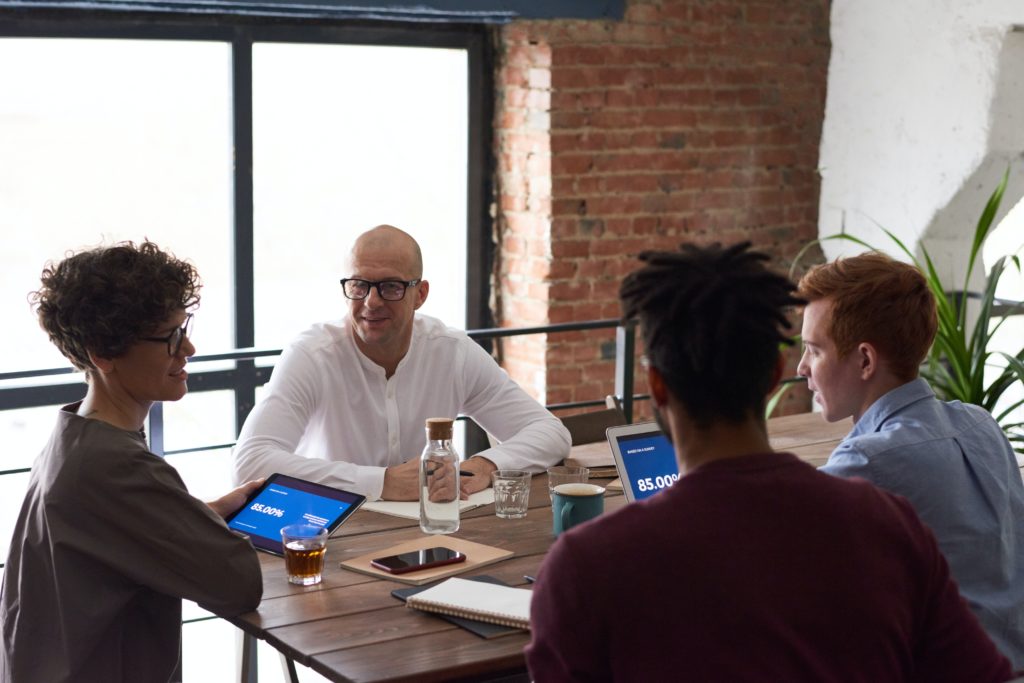
I would look at Jack as not as a eucalyptus tree, which is a terrible trick that the Australians played on the United States because they would send us eucalyptus trees. The trees would grow very quickly, however, the roots were very shallow. I remember I lived in Southern California, I grew up in Pasadena, California. I was bussed to school. Anytime there was Santa Ana winds, all the eucalyptus trees would fall into the streets. I had no school that day because the bus couldn’t get through the streets.
I loved the Aussies but the eucalyptus tree is very impressive, it grows tall very quickly. However, that’s not the way to grow a business. You need to grow like bamboo. Bamboo grows deep roots, it’s the fastest-growing plant in the world. Whether it takes three years, five years, some take 15 years. I can imagine the first Indonesian farmer growing bamboo, his spouse probably divorced him. It’s like, “Nothing has grown here. You planted this 15 years ago.” When the root system is created underneath, it shoots up very quickly to the point of growing six inches per week.
You need to grow like bamboo. Bamboo grows deep roots, it’s the fastest-growing plant in the world. When the root system is created underneath, it shoots up very quickly to the point of growing six inches per week.
Ironically, if you go to Jack’s home in Santa Barbara where he still lives, his entire backyard has been taken over by bamboo. If you have bamboo in your backyard, you know that you really have to put some underground netting because it just takes over the soil and the underground. If you have a pool, forget it. It’ll ruin the concrete.
Being like bamboo, and that’s what I tell people when I go overseas, “Be like bamboo. Don’t be like eucalyptus.” No offense to our Aussie listeners and viewers. You want to create a deep root system in business and have a deep enough foundation. I know that when there’s a skyscraper being built, it’s the deeper the foundation, the taller the building. It’s where you don’t see in the beginning that matters most. If I were to define world-class entrepreneurship in two words, I would call it delayed gratification.
For sure. Do you have an example where delayed gratification made a huge impact on your life?

Yes. I remember the birth of my first son. My former wife, Amy and I, were attempting to have children for about 3 ½ years and nothing happened. It was fun trying but nothing was happening. We’re living in Manhattan during that time. She encouraged me to go to a certain type of bank where we checked whether or not the man’s seed is vital. I didn’t think it was my fault, but I said I’ll try anything.
Prior to going, and it happened to be the business building that I was working in so it’s the last thing I wanted for the doorman to know, “Hey man, I’m going there to get checked” because I figured they’d be mocking and laughing at me. Gabriel was conceived, he was born on October 25, 2000. Just like children, it takes about 40 weeks if you have a typical birth. That is a long time for a human being just to—your father released you, your mother received you. Today, maybe 20 years from now, that will be different. I wasn’t birthed in a petri dish. It takes time to grow. My son took about three years and we had no idea what the problem was but we knew we wanted children. Then Breanna was born two years later in November. She was born on November 6, 2002.
I stopped with man-on-man defense, or person-on-person defense to be politically correct. I didn’t go to three or four because I didn’t want to play zone defense. I’m very happy with our two kids. They’re in their late teens; one is in college and one is still in high school. The best example of delayed gratification is having kids.
True, I have a new one myself.
Building a team too. When you build a team, it takes time to train, to build a culture and the core values and everything else. The bigger the team, the more time it takes to enculturate them into the whole process. Sometimes, you got to get rid of the bad egg or the infected or one drop of poison that poisons the whole glass.
Business is a great metaphor for life and it’s very accountable. My goal is to be the person I pretend to be. That’s what I always read before I go onstage. Socrates said, “The greatest way to live with honor in this world is to be the person we pretend to be.” I think Carl Rogers said, who is one of Jack Canfield mentors, Carl Rogers, the great psychotherapist, he said, “What I am is good enough if only I could be it openly.”
That’s what I would encourage anyone watching or listening. Vulnerability has its advantages in building rapport with others. I know for a fact money can’t buy happiness, but I know that it makes misery a lot easier to put up with. I like my money.
I like money. Money can't buy happiness but I know that it makes misery a lot easier to put up with. Share on XMoney also is a magnifier. It amplifies who you already are.
It makes you more who you are.
One distinction I got that was really powerful, you’ve reminded me of, is rather than fake it until you make it, which I didn’t really resonate with. I don’t want to be a faker or like a counterfeit person. I much more resonate with the concept of act as if, that’s somewhat the same thing but kind of metaphysically, or at a spiritual level, I think it’s a world of difference.
To be self-effacing, Stephan, they say, “Are you a marketing narcissist?” I said, “I don’t know if I am or not. I’m not much but I’m all I think about. You can decide whether that’s narcissism or not.” Most importantly, my business wasn’t much but it’s all I thought about because I knew I had the responsibility of building this thing. Many people focus on the wrong thing. I’ll go on stage and I’ll ask people, “Okay, raise your hand if you’re on a plane and you’re 40,000 feet in the air, you want a pilot who loves to fly. Raise your hand if you love a pilot who loves to fly.” All the hands go up. I go. “Really? Okay. Raise your hand now if you prefer a pilot who loves to land.”
When you look at the focus is what do you want? The pilot who loves to fly, which I’m sure you can find plenty. I could fly probably at 40,000 feet. There’s a lot of error and time, but landing is the key. When I fly from San Francisco where I am into maybe Singapore or into Australia, I have some property in Gold Coast and my partner lives there. If they blew the landing, if they didn’t stick the landing… It doesn’t matter how many lives they saved along the way, it doesn’t matter all the turbulence, or storms, or cyclones, or whatever that they dodged. You judge the pilot by the landing. You look at them and you give them a dirty look.
It’s not fair but that’s what business is. It’s about sticking the landing whether it’s with your team, your marketing, your launch, and everything else; it’s not about just being in the air and flying. That’s where people these days go in the wrong direction enthusiastically is they’re looking at, “How do I make a lot of money?” I don’t know. Last time I checked, Stephan, gross sales don’t pay the bills, it’s net sales that pay the bills.
I interviewed Mike Michalowicz and we talked about this on my other show about profit first. You want to plan your profit into the equation rather than have it be an afterthought or a bonus at the end of the year. “Oh my goodness, we actually made a profit.” No, you actually engineer it in so that whatever is left, that’s what’s available for expenses.
I work on 83% of the money I make, 17% is spent right into my profit investment account. When you look at life that way, it’s not that you have to be more conservative. You can put some significant money aside over time. I think it’s Albert Einstein that said, “Nothing is more powerful than compounded interest, or the power of compounding.” You take an index card and if you double it and then double it again to four then to eight and then to 16. If you doubled it 50 times, I ask people, “How tall would that stack be?” Some people say, “Oh, maybe 30,000 feet, or the Empire State Building.” They’ll give some guesses. I say, “No. Not even the moon. It’s from here to the Sun.” If you compounded a 51st time, it would be here to the sun and back. The Sun is so far away it takes eight minutes for the light to reach the earth and light is going at 186,000 miles per second, you can imagine.
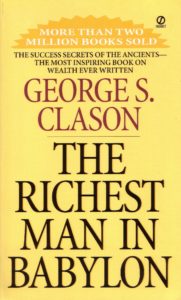
Compounding has power, but you won’t see the impact of it unless you act like bamboo, going back to the eastern tradition of just putting investment aside and spending into an investment account versus saving. People hate to save, but they love to spend. Spend it into an account and even if it’s 10%—The Richest Man In Babylon, a great book—just 10%, you only work with 90% of what you generate, the 10% is not even yours, you don’t get to see it. It will change your life.
Yeah, I started something called infinite banking about eight years ago, maybe six, an absolute game-changer. Are you familiar with the concept of infinite banking?
It’s mind-boggling, but it’s a very simple principle. I just give the responsibility to someone else, so that everything I’m seeing as my gross income, and it’s gross, because gross means I don’t get to keep all of it. If I’m working with 90%, in my case 83%, then I’m building equity. Over time it compounds.
So rather than borrow from the bank and pay the interest to the bank, you can borrow from yourself and pay the interest to yourself.
100%.
…using life insurance policies, but there’s a lot of rules around it.
One of my favorite sayings when I’m onstage, especially in Asia, because they’re quite good at it, I tell them, “If you steal from one person, that’s called plagiarism, but if you steal from many, that’s called research. Be a researcher. Be a researcher because originality is overrated. It’s the most expensive and most costly action in marketing or advertising.”
It’s a similar concept, I learned this one from Taki Moore, he has a definition for R&D, which he may have stolen from somebody else, but, “Rip off and duplicate.”
Exactly, and he’s probably a great researcher.
Yeah, I know he is. The two episodes to listen to on Get Yourself Optimized about infinite banking, if you’re interested, Ray Poteet and Tom McFie. It’s been a game-changer for me. The money I don’t even see, it just goes into the infinite banking accounts, and then I have the money available to take out loans or to loan out other people. You keep that money in motion and it makes more money, and that compounds really fast, it’s pretty amazing. You take your money out and loan it to your business, your business pays it back with the extra interest, so you feed that money machine even faster. All that money that’s out continues to compound in your money machine, even though the money is being loaned out.
You become your own bank, and if anyone has any doubt, banks always make money. They give you a loan when it’s sunny and not raining, and they don’t when it’s rainy. You get the umbrella when it’s sunny, and they take it away when it’s raining because they always make money. You become your own bank. Pain is inevitable, suffering is optional. If you don’t get to see that money, water seeks its own level, it would be a much higher sea level for your business. It’s a very good point.
Yeah, for sure. I want to cover a few more topics in the 10 minutes we have left. I’d love to learn a little bit more about the Socratic Method applied to copywriting. I’d love to get some examples and I also want to learn a bit more, my listeners to learn a bit more, about becoming an Amazon bestseller because you’ve got some techniques there too.
Sure. Well, let’s start with Amazon bestsellers. In 2002, I was driving into a parking lot, not far from where I’m sitting right now, which is in Corte Madera, California and I’m in the Bay Area, which is Northern California, just north of the Golden Gate Bridge, which connects the city of San Francisco to Marin County and further up the Napa Valley and Sonoma County. The parking lot was completely full, and I was meeting a high school buddy of mine. His name is Scott Kerslake and he had gone to Boston College, created an amazing company called Athleta, which was sportswear for women, and a catalog, and now they have stores.
I’m only seeing him for the first time in a long time and he’s one of those guys where you start where you left off and he was one of those people where I would say, “Hey man, it’s not like I love you, man, it’s like Scott, I love you.” Between guys, when you say that, you have a very intimate and close relationship.
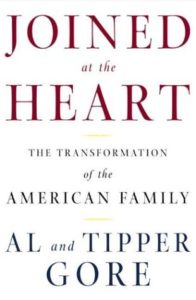
He’s one of those guys and I didn’t want to be late. I couldn’t find a parking spot, so I parked about half a mile away, I ran, I was late and I was seeing all these people with books underneath their hands, it’s a thick book and they all have the same book. The book was called Joined at the Heart, it was published by Owl Books. The authors were Al and Tipper Gore when they were married, this is 2002. He was the former vice president. He almost was president, but there was a little fiasco in Florida.
Yeah, a little one.
Yeah, it just continues, it’s politics. He was at a place called Book Passage, which is an independent bookstore here in Marin County, but gets a lot of very well-known authors and so it was a physical book signing. I asked people, I said, “What the heck is going on, man? I mean the parking lot’s packed.” He says, “It’s Al and Tipper Gore and they have the book.” Most people were bringing their own books in to get signed, they weren’t even buying it from the store, which is the problem with the physical book signing. They get a little free consultation along the way. Throngs of people, hundreds of people, it’s very unusual, the typical book signing has maybe a dozen people there and they sell half a dozen books, it’s not what people think.
After dinner, I had my dinner with my buddy Scott, I went to the Book Passage and I knew the lady behind the counter and I said, “How many books did you sell?” She said, “Oh my gosh. It was the most amazing book signing ever. We set a record and we sold over 440 books.” For a physical book signing, that’s a lot of sales. I haven’t heard of that many books sold, you have to have like a former president or something. I said, “That’s interesting.” As I’m driving home, to my family, I’m thinking, “You know what, he’s probably getting $2 a book. That’s about $1000.” That doesn’t even cover one first-class ticket from Tennessee, that’s not very efficient.
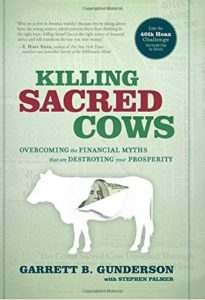
Fast forward three years and I thought why don’t we have a virtual book tour? This Amazon thing is starting to really build with Jeff Bezos. They’re selling more books than merchandise back then in 2004-2005, so my first virtual book tour was with my good friend and now most profitable partner I’ve ever had, T. Harv Eker, who ran Peak Potentials, a very good trainer and a very dear friend and mentor. I’ve mentored him in digital marketing, and I trained his son Jesse and he stole him from me three years later after he was trained. Now, he has the fruit of the benefit of that. The interesting thing is we sold 3000 books. I had another one with my good friend Garrett Gunderson called Killing Sacred Cows and Garrett is something very unique. He gave the book away for free and just had shipping and handling costs. We sold over 2000 books.
Not everyone was willing to do that but all these authors started coming to me saying, “Hey, can you do this virtual book tour thing?” I started doing a bunch of them and after 80 of these, I ended up being the go-to person to sell books online, which was just using a teleseminar and having the author tell the story. My good friend Gay Hendricks, who has written many books, he’s a dear friend and we’re part of the Transformational Leadership Council or TLC, he said, “Alex, authors don’t make money writing books, they make money explaining books.” That is all I had to hear.
Fast forward to 2012-2013, eventually, after Randi Zuckerberg started to do, who is Mark Zuckerberg‘s sister, we started to have Facebook live in 2015, now we have the networking effect, and the five-letter word that’s most important in all of social media, the share button. Now, I charge people nearly $10,000 to get them into an Amazon bestseller, it’s very simple, we get the Kindle version, the KDP. We get it down to $0.99 for one week, we get our bestseller status in multiple categories, a tip of the hat goes to Mike Koenigs who taught my partner, Sandra Bravo, this process. When you have multiple categories as bestsellers, what we are best at is getting reviews that are certified, meaning they purchased the Kindle version or the physical book and they’re giving a review. Once you get five stars for over 100 of these certified reviews, the most I’ve ever gotten is nearly 2000, 1900.
Oh, wow.
That’s crazy. It was a political book so that’s why it went so well. What ends up happening is you just are showing up everywhere in Amazon, and Amazon has its own ecosystem. The virtual book tour utilizing Facebook Live, it was Google Hangouts at one time, and then recently was through teleseminars, doing it virtually, it builds the authors’ platform, which leads into the way to utilize a Socratic Method. With the Socratic Method and that’s the other question you asked, we simply ask people what’s most important to you about this topic, that’s it.
Before you launch something, before you launch a mastermind, before you launch a product, before you do anything, why not get consensus because people support what they help to create. The shovel of reality hits you to your forehead if you just guess and you’ll guess wrong. I’ve done this for years and I always guessed wrong of what people want. You can’t give them what you think they need, you have to give them what they want. People had to be sold, they love to buy. Jeffrey Gitomer has said that over the years, great sales trainer and a good friend of mine.
Before you launch something, before you launch a mastermind, before you launch a product, before you do anything, why not get consensus because people support what they help to create.
Basically, I don’t like to teach people what to think, I just teach them how to think and they tell me what they want. By simply asking them and building the business through the whole bamboo principle of deep foundation, once you get all these questions coming in, then you end up finding out what they’re thinking. When I’m about to write a sales letter or before I launch a product, I always start with the FAQs. I don’t start with benefits, I don’t start with advantages, I don’t even start with case studies or testimonials, because we don’t have any. I say, “Okay, what are they going to ask me?” and I look at my competitors and I buy all the competitor products and I look at their FAQs. Once I know what questions they’re willing to ask, every objection can be converted into a frequently asked question.
For example, “Alex, I can’t do this because I don’t have a product or service to sell.” That is the number one question I’m asked for Guerilla Business Online, which is what I’ve been selling since 2009. That’s the objection, as an objection, that’s a cul-de-sac, that’s a dead end. What if we made it into a roundabout, we don’t have them in the US, but we have them in England, and we have them in Australia and other European countries.
What if we turn that objection into a frequently asked question? Can I do this and not get left behind even if I don’t have a product or service to sell, as the FAQ. Listen to the answer, this is where the sales comes in, “Yes. In fact, 83% of all of Alex’s students who come into Guerilla Business Online don’t have a product or service to sell, you have a disadvantage if you have a product or service to sell, because Alex believes that your ego will be attached to that product. You’ve spent tons of money on it, and you won’t want to change, and he may not want to accept you as a student. But if no product, no bad habit, congratulations, you are in the driver’s seat and you have an unfair advantage over people who have a product or service. Let’s do this.”
That’s great.
I’ve got, “Let’s do this,” from Grant Cardone. As it turns out, when you convert your objections into FAQS, and you look at your case studies, and the purpose of a case study and a testimonial is to obliterate an objection, you tell stories, and you have metaphors just to obliterate objections. What ends up happening is all the resistance evaporates, is eviscerated, that only can happen by asking questions, not by telling, but by asking. Hopefully that answered your question.
That’s great. Is there an example from one of your students where they’ve applied this technique like writing the FAQs first and then turning that objection into a question. Completely eliminating that objection before they can articulate it.

Every one of them, because I teach them the process. Here’s the metaphor, I believe in metaphors and analogies because it’s easy to see. The objections are the seeds to the apple tree. I use an apple tree, because George Washington, you can see it, and blah, blah, blah. It has heritage. You can’t teach someone about the unfamiliar until you bring them from the familiar. The apple tree, okay great, the seeds are the objections. The roots of that tree are the frequently asked questions, because when the seeds sacrifice themselves, they flop into the roots, you don’t see the seeds anymore, they don’t exist. The question is an invitation. An objection is a resistance and a roadblock. What about the trunk of the tree? That’s your origin story. Your origin story, its purpose, and only purpose is not to win the heart of the listener, or the viewer, or the reader, it’s to obliterate objections.
When did it happen? Like the Jack Canfield example, what happened, who was involved, and so on, and so forth. How is it relevant and important? I always end with why. Why is it relevant and important to the viewer, listener, or reader? That’s the trunk of the tree. If the trunk is nice and strong, it doesn’t matter what kind of storm there is, the tree will not topple over. Then the branches are your case studies. A case study is not a testimonial or an endorsement. What was the problem before they met you? What’s the action they took after meeting you? What’s the result they got? It doesn’t always have to be positive, but the goal is to obliterate an objection.
I had a 6-year-old Indian girl. She’s not a woman, she’s not a lady, she’s a girl. She’s at a 5-day event and her mother says, “We want to buy your $5000 training,” I said, “Are you kidding? She’s six,” and the mother looked at me and said, “How dare you, we are going to sue you. We spent five days, and you gave us hope, and now you’re telling me this,” I was a little ashamed and I apologized to them. Actually, I got down on one knee. I was on stage, I got down on one knee and I said, “Please forgive me. Okay, let’s do this.” She said, “Yes.” That’s a story. She ended up having a membership site for teenagers eventually, putting on makeup that doesn’t make them look like you know whats.
There was another guy who was at the time 91 years old, he was a World War II veteran, Greek descent, he lived in San Francisco. He came to me and said, “Alex, you think I’ve got enough life in me to buy this?” I said, “Nick, if you want to do it, let’s do it.” He did it and within 18 months, he followed through, he implemented it. He had 1800 World War II vets, some had shell shock and all the stuff that people have come back from war. I’m so grateful for people who protect our country. He was charging them $27, it was the cheapest therapy they ever had and they got to commune with each other.
You can't give your customers what you think they need, you have to give them what they want. Share on XThose are two case studies and I did them very quickly, I spent more time on stage. When they say, “Am I too young, am I too old?” I say, “Well, it depends. If you’re between the ages of 6-91, this product and service is for you.” That’s the way you use the case study. You have branches, those are case studies, what about the leaves? The leaves are metaphors. Let’s talk about indecision. There’s a donkey and this donkey was a story written by Aesop. He was a hunchback, he was a slave, but then he was freed because he was a great storyteller 2600 years ago, Aesop’s Fables, and the donkey was really hungry. He saw a pear and an apple on the ground. He looked at the apple, the pear, the pear, the apple, the apple, the apple, the pear, and he collapsed, and starved to death. I tell people, don’t be that donkey. Don’t be indecisive. Don’t be an ass, it’s in the Bible, okay?
The fruit is the irresistible offer. What are the bonuses, what are you offering that’s going to eliminate the objections, everything on that apple tree is called the objection obliterator concept. I don’t want to handle objections, I want to obliterate them and get rid of them. I look at objections first and then everything else, because those are the keys that unlock the doors. The fruit is the irresistible offer. If the offer is done right with all the other elements of the tree, then you’re going to get the sale. What’s at the core of an apple, Stephan?
The fruit is the irresistible offer. What are the bonuses, what are you offering that’s going to eliminate the objections, everything on that apple tree is called the objection obliterator concept.
The seed.
The seeds. Those seeds are objections to the next offer. If you’re teaching a course on conversion, then they say, “Okay, great. I can convert. How to get more traffic?” Those are the seeds inside the fruit for the next apple tree that’s going to grow, and so on, and so forth. Okay, now I can get traffic, now I can convert, how do I scale the business? Those are the seeds on the fruit of the apple tree for the traffic apple tree.
I like to look at three ascension models before I even begin, step one, step two, step three. I learned this from my good friend Lisa Sasevich. What’s the problem and solution, what’s the next problem and solution, what’s the third problem and solution. She calls it PS, PS, PS. Point A to point B. Point B becomes Point A2. Point A2 to Point B2 becomes Point A3. The point A3 to Point B3 that’s where I stop. If we get them that far, you’re in heaven without the inconvenience of dying. Hopefully, that’s sufficient enough for the listeners.
Wow, that was amazing. Did you create any kind of infographic, or kind of pictorial for this?
Of course.
I’m happy to send it to you. In fact, even the PowerPoint. Because of what I do, I charge $40,000 for four months. I go into mentoring and coaching organizations who hate to sell, because that’s my podcast. All selling aside is for people who hate to sell, that’s my ideal listener because it’s seating through storytelling is the new selling in my opinion. You don’t have to sell, just get people in the position to buy.
What I do is I say, “Okay, what are the objections?” and there’s typically nine. The most I’ve seen is 23 where they’re very specific. They’re not just, “I don’t have the money,” or “There’s something in my budget,” or “I don’t have the time.” No, those are not objections, those are throwaways. I mean specific objections. “I’m not a technology person. I’m afraid that I’m going to get left behind,” or, “Well, I don’t have a product or service to sell,” things like that. “I need ongoing support, do you have a support desk?” They’re very specific questions that you’re hearing from people.
I was involved with a diet program one time and I asked the owner, “What’s your number one objection?” He said, “Does it work?” I said, “What’s number two?” “How fast does it work?” I said, “I don’t believe you.” This is 2004, he was making $2 million a month. I went to his operators and I said, “What’s the number one objection?” 8 out of 10 told me, “Can this product work if I’m on antidepressants?” Can you imagine? Which meant that there were emotional women who were buying, they were far more obese than people thought, and the product was not going to serve them, the product was there to shed maybe 20-25 pounds, but some of these people are over 100 pounds overweight.
I had a landing page that said, “If you need to lose 50 pounds, or 25 pounds, click here, 25-50 pounds, click here, and over 50 pounds, click there,” and he made an extra $500,000 a month which was pure profit. That’s the Socratic method of just not assuming you know. Assuming makes an ass of you and me.
I know that one. That’s a good one.
The most important piece of this objection obliterator is you create a notebook. You get all the FAQs, and you put that in one section, then you get all the objections, you put in another section, you get all the case studies, you put in the third section, the metaphors, and now this notebook which I like to print on red paper. I don’t send it digitally, it’s that valuable. I put a number on it, a certification number, and we give it to each of the people, and there’s a non-circumvention agreement, there’s a confidentiality agreement, and when they leave the company, they have to turn it back in. Can they copy the pages? I suppose they can, but we go out of our way, and that is a way to build a culture, and a sales organization without looking too pushy. That’s called the objection obliterator notebook.
That is super cool. It reminds me a little bit, it’s completely different of course, but it reminds me a little bit of The Culture Book.
Yes.
That’s Tony Hsieh. I had all of the Zappos employees contribute to and they would give this book away to people who work in the offices and everything.
Yeah. That didn’t deal with objections. That was his core value of happiness and I’ve interviewed him twice. We did a virtual book tour together. I can’t get access to him now, but prior to being a billionaire, I knew him quite well.
That’s awesome. He actually was in the decision-making process for whether they were going to hire me or not to help Zappos with their SEO.
I hope they do.
That’s what they did. They hired me and my team prior to the acquisition of my previous agency, Netconcepts. Then he hired me again a couple of years after that.
Anyone who has a book with so many pages, they have to know what they’re doing.
You would think. Speaking of learning from an expert, if somebody wanted to continue the learning with you, you’ve got so much wonderful knowledge, and wisdom to share, where would be the best place for them to go to?
My main website is marketingonline.com, I’m the founder of that website. It was the turn of the 21st century when we started it, but don’t go there, because you have to spend money to go there.
Well, if you’re willing to spend money, if you’re willing to invest in yourself.
Yeah, but we’re getting to know each other, don’t go there. My preference is to go to allsellingaside.com and I put 25 years of sales and marketing know-how for people who hate to sell into 25 minutes each week on a podcast, and there are show notes there. I think it’s worthy of devotion. It’s a public service, it’s my legacy, it’s more than any book I could ever read, and that’s what I’m most proud of actually. I have the most fun. I do get 100,000 clients from there, but that’s not my intention. My intention is just to spread the word and see what kind of feedback I get, and then based on the feedback that is shocking like, “You like that? I didn’t think that was that important.” “Well yeah, I like that more than anything else.” Great, I’m going to focus on whatever that is on my next day’s presentation and that goes back to the Socratic Method.
That’s awesome.
My pleasure.
Thank you again, and thank you, listeners, for participating, and engaging mentally, and even spiritually in this episode. Take some action. Apply this in your business, in your life, and make a difference for people. We’ll catch you in the next episode. I’m Stephan Spencer signing off.
Important Links
- Alex Mandossian
- MarketingOnline.com
- Facebook – Alex Mandossian
- LinkedIn – Alex Mandossian
- Twitter – Alex Mandossian
- Instagram – Alex Mandossian
- Google Plus – Alex Mandossian
- Jay Abraham – MS previous episode
- Jay Abraham – MS previous episode (Jay Abraham interviewed me)
- Get Yourself Optimized
- Dr. Amit Goswami – GYO previous episode
- Ray Poteet – GYO previous episode
- Tom McFie – GYO previous episode
- Mike Michalowicz – GYO previous episode
- Alexisms: Useful Life Lessons from a Recovering Serial Entrepreneur
- Influence
- Life’s Golden Ticket
- The Richest Man In Babylon
- Joined at the Heart
- Killing Sacred Cows
- The Culture Book
- Harvey Mackay
- Warren Buffett
- Richard Branson
- Larry King
- Tony Robbins
- Marianne Williamson
- David DeAngelo
- Eben Pagan
- Infusionsoft
- Ontraport
- 1ShoppingCart
- Rob Bell
- Jack Canfield
- Mark Victor Hansen
- Denis Waitley
- Nightingale Conant
- Socratic method
- Brian Tracy
- Les Brown
- Armand Morin
- Teleseminar Secrets
- Jeff Walker
- Rick Raddatz
- Steve Jobs
- T. Harv Eker
- Russell Brunson
- Ryan Deiss
- Perry Belcher
- Vishen Lakhani
- Dr. Robert Cialdini
- Brendon Burchard
- Chicken Soup for the Soul
- Train the Trainer
- Joe Polish
- Stick Strategy Secrets
- Bill Clinton
- Askbillclinton.com
- Harvey Mackay
- Donald Trump
- Learning Annex
- Bill Zanker
- National Achievers Congress
- Raymond Aaron
- Bill Gates
- JK Rowling
- W. Clement Stone
- Napoleon Hill
- Carl Rogers
- Mike Michalowicz
- Albert Einstein
- Taki Moore
- Scott Kerslake
- Athleta
- Book Passage
- Jeff Bezos
- Garrett Gunderson
- Gay Hendricks
- Transformational Leadership Council
- Randi Zuckerberg
- Mark Zuckerberg
- Mike Koenigs
- Sandra Bravo
- Jeffrey Gitomer
- Grant Cardone
- George Washington
- Aesop
- Lisa Sasevich
- Tony Hsieh
- Zappos
- Netconcepts
- Robert Kiyosaki
- Suze Ormand
- Mikhail Gorbachev
- Dalai Lama
Your Checklist of Actions to Take










About Alex Mandossian
 Since 1993, Alex Mandossian generated nearly $417 million in sales and profits for his marketing students, clients, and joint venture partners on six continents.
Since 1993, Alex Mandossian generated nearly $417 million in sales and profits for his marketing students, clients, and joint venture partners on six continents.
He’s best known by international thought leaders for teaching students from evolving nations (3rd World) how to profit from 1st world Digital Marketing strategies.
Best-selling author Harvey Mackay acknowledges Alex as the Warren Buffet of Digital Marketing because of his ability to make money for his students and joint venture partners.
He has shared the stage with Richard Branson, Larry King, Tony Robbins, Marianne Williamson, Robert Kiyosaki, Suze Ormand, Mikhail Gorbachev, the Dalai Lama, and two U.S. Presidents.
As a “Virtual Trainer” with over 22,000 hours of training time and nearly 4,800 interviews … Alex’s lifetime goal (with his colleague, Jack Canfield) is to influence training one million other trainers by his 77th birthday.







Leave a Reply